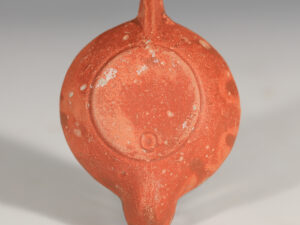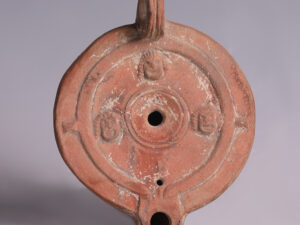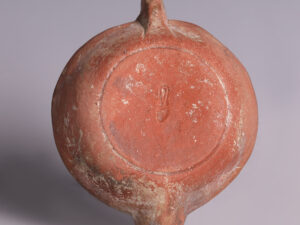The earliest oil lamps made from clay can be dated back to the Bronze Age, to around the sixteenth century BC and by the Roman period, oil lamps, or lychnus, from the Greek λυχνος, were commonplace throughout the Empire. They were used for domestic, public, and religious purposes, including funeral ceremonies, lighting up businesses, and creating ‘special effects’ at the theatre. The oldest Roman lamps date back to the third century BC, and it is thought that they were influenced by the Southern Italic style. These were more enclosed than their predecessors, allowing for further decoration on the discus. The vast trade networks set with the expansion of the Roman Empire allowed this item to be spread across Europe, Eastern Asia and Northern Africa, which led to the development of several provincial variations.
 Ancient Roman Terracotta Oil Lamp with Grape and Vines Motif
$746.72
Ancient Roman Terracotta Oil Lamp with Grape and Vines Motif
$746.72
 Elaborate Roman Bronze Oil Lamp
$4,751.88
Elaborate Roman Bronze Oil Lamp
$4,751.88
Ancient Roman Terracotta Undecorated Oil Lamp
$203.65
A Roman, mould-made, terracotta oil lamp with a plain discus. The lamp features a distinctive wide, angled nozzle and two decorative volutes to each side. Three concentric circles surround the discus, descending from the flat narrow shoulders, creating a tiered outline. The oil lamp has a filling-hole in the middle of the discus and a larger burn hole at the nozzle. The lamp has a flat base, decorated with a single circular groove. The lamp is covered in an uneven layer of red pigment.
Out of stock
Additional information
| Weight | 52.9 g |
|---|---|
| Dimensions | 9.3 × 6.3 × 2.4 cm |
| Culture | Ancient Roman |
| Pottery porcelain | Terracotta |
| Pottery and Porcelain | Terracotta |
| Region | Southern Europe |


















